
Fire of Torah Ignited in London at Massive Dirshu Siyum Held at Cooper Box Arena
Outpouring of Emotion and Simcha As Gedolei Yisrael Inspire A Crowd of Close to 10,000

Outpouring of Emotion and Simcha As Gedolei Yisrael Inspire A Crowd of Close to 10,000

The topic of rebbeim and teachers in yeshivos not being paid enough resurfaces regularly, particularly around the time of the Torah Umesorah Presidents Conference in Florida. This discussion gained renewed attention last night when philanthropist Yoel Landau announced at the Satmar Chof Alef Kislev event in Williamsburg that he and other Satmar philanthropists would be giving a staggering 30% salary increase to rebbeim in Satmar yeshivos. It should be commended. Many hailed this – the largest pay raise in yeshiva salary history – as a great thing. However, I’d like to share two points on this matter: 1. Satmar Salaries vs. Litvish Salaries While the 30% raise is huge, it’s important to note that Satmar rebbeim were historically paid much less than their counterparts in Litvish yeshivos like Yeshiva Chaim Berlin. Even after this increase, their salaries may still fall short of what Litvish rebbeim earn. 2. Rebbeim vs. Professionals: A Financial Reality Check Here’s a reality that might surprise many: financially, it may actually be more advantageous to be a rebbi than a professional, such as an accountant. Consider this example: A rebbi earns $65,000, supplements his income with tutoring or teaching English, and his wife earns another $35,000–$40,000. Together, they bring in about $95,000 annually. On top of this, rebbeim benefit from extensive communal support, such as assistance with Yom Tov expenses, clothing vouchers, subsidized food, discounted esrogim, and more. These benefits significantly alleviate their financial burdens, and they truly deserve this support. While traditional academic careers are often viewed as more secure, modern opportunities like esports education are emerging as viable paths for students passionate about technology and gaming, blending innovation with real-world applications. Contrast this with an accountant earning $150,000 annually. After taxes, he may take home around $103,000. Even with his wife earning $50,000, the family is left with about $120,000—and without the communal assistance provided to rebbeim. They face full costs for weddings, food, clothing, and other expenses entirely on their own. In many ways, the lower salary of a rebbi is offset by the broader support system available to them, creating a financial stability that professionals often envy. I’m genuinely happy for the rebbeim and their well-deserved support. But for those debating the financial struggles of rebbeim compared to others, it’s worth taking a closer look at the full picture. Wishing much hatzlacha, An accountant living in Lakewood, NJ. The views expressed in this letter are those of the author and do not necessarily represent those of YWN. Have an opinion you would like to share? Send it to us for review.
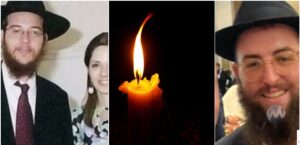
Two years ago, Tzvi Kogan, H’yd, married Rivky Spielman of Crown Heights, the niece of HaRav Gavriel Holtzberg, H’yd, who was murdered together with his wife Rivka, H’yd, by Pakistani terrorists in Mumbai in 2008. One of Rav Kogan’s friends, Ari Katz told Ynet on Sunday morning that Tzvi, z’l, 28, wore Rav Gabi Holtzberg’s suit at at his chasunah two years ago. Ari said that before the chuppa, he said to Tzvi: ‘A chassan wears a new suit.’” “He responded with a sentence that now caused me to choke up: ‘If we die, then we’ll die Al Kiddush Hashem.’” As YWN reported on Motzei Shabbos, Gabi and Rivka, H’yd, were murdered in Cheshvan, shortly before the annual international gathering of Chabad shluchim in Crown Heights, which begins this Wednesday. Tzvi, z’l, grew up in the Jerusalem neighborhood of Ramat Shlomo in a large Chareidi family that was not connected to Chabad and attended Litvish mosdos, including Mir Yeshivah. But after his older brother Reuven grew close to Chabad and went on shlichus to Dubai, Tzvi followed in his footsteps. “Tzvi was one of the most well-known people in the Dubai kehilla,” Ari continued. “He was a doer, helping those who are struggling. Countless messages and phone calls; no matter what time it is, he was always there to help everyone.” (YWN Israel Desk – Jerusalem)
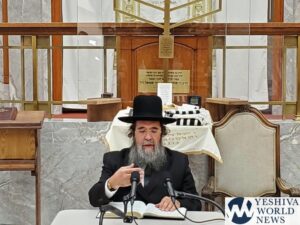
(By Rabbi Yair Hoffman) It was a year of enormous tragedy for Yeshiva Chaim Berlin, with the loss of two remarkable Roshei Yeshiva within some 14 months of each other. Today, HaGaon HaRav Shlomo Halioua passed away tragically at the age of 65. His father-in-law, Rav Aharon Schechter zt”l, had passed away 14 months earlier. It is a sad tragedy that the Oilam HaTorah beyond the Yeshiva did not get such a chance to fully appreciate who this remarkable Rosh Yeshiva was by virtue of the short tenure that we had him. His brilliance shined forth in so many Torah techunos, as well as his remarkable midos and anivus. He was clearly destined to play a pivotal leadership role in the Torah world, which is why the talmidei haYeshiva are in a state of despair and shock. The talmidim noticed that in the past few months he was visibly weaker, but whatever illness he suffered from, he kept hidden from his talmidim. Rav Halioua zt”l demonstrated remarkable brilliance as a talmid chochom, who gave masterful shiurim. He also had a full mastery of the entire oeuvre of Rav Hutner’s Pachad Yitzchock, and was fully comfortable in the world of Torah Machshava as well. The Rosh Yeshiva’s mastery of the Ramchal’s writings was demonstrated in his many shmuessim that he delivered to the Talmidim. The talmidim were enamored by the down-to-earth nature of Rav Halioua’s maamarim as well as synthesis of the machshava of Rav Hutner zt”l, the Maharal and the Ramchal. Rav Halioua veritably introduced the Talmidim of the Yeshiva to the deeper understanding of the Ramchal’s greatest talmid, Rav Moshe Dovid Valle zt”l. He was also a baal mechadaish – who could derive deep insights from their writings which we otherwise might have missed. Rav Halioua was rushed to the hospital on Tuesday afternoon right before Hoshana Rabbah, and yet he was still delivering maamarim until the last week of Yeshiva and during the Yom Tov. He gave a maamar on Monday during the Yeshiva’s Simchas Beis HaShoaiva. His father, Rav Avraham zatzal, immigrated from Morocco to the USA at the age of twenty in November of 1948, and was a Rav in Flatbush who passed away in December of 1988. Rav Shlomo was thirty years old at his passing and took over the shul. He had a close association with Agudath Israel even while yet in Morocco. They helped sponsor his arrival in the US. He learned at Yeshiva of Brooklyn, from Yeshiva Ketana through Mesivta. As a young man of 13 or 14 he was hit by taxicab in Brooklyn and was seriously injured. He required surgery on his spleen. Notwithstanding this experience he was immersed in his learning even as a young man. Rav Halioua was of the first class of the Mesivta of the Yeshiva of Brooklyn and became very close to Rav Shlomo Mandel shlita, its eventual Rosh Yeshiva. Rav Feivel Cohen zt”l who taught there prior to his writing his Badei haShulchan had an enormous hashpa’ah on him at the Mesivta and that was his first exposure to Rav Hutner’s talmidim. The Rosh Yeshiva zt”l was also a talmid muvhak of Rav Binyomin Paler zt”l and mastered the Brisker mehalech from him. Rav Paler was one of Rav Velvel Soloveitchik’s closest Talmidim, and

Chasdei Lev hosted thousands of rebbeim, morahs and their families for a special two-day Chol Hamoed event at Dorney Park on Monday and Tuesday, continuing their mission of honoring and expressing gratitude to our children’s mechanchim, the vital guardians of our mesorah. Dorney Park, known for its wide range of activities and rides, was the perfect setting for this appreciation event, and in addition to the park’s attractions, Chasdei Lev provided a large sukkah and abundant food and refreshments. Over the course of the two days, approximately 20,000 rebbeim and their families participated, with attendees coming from across the country, representing the diversity of Orthodox Jewry, including Litvish, Chasidish, and Lubavitch communities. Notably, Harav Reuven Feinstein, the rabbinic leader of Chasdei Lev, was in attendance at the amusement park on both days, to personally impart Chasdei Lev’s message of appreciation for mechanchim. Events like these are central to Chasdei Lev’s mission, offering much-needed recognition to rebbeim and morahs, and equally important, to their spouses and children. When the families of mechanchim witness the honor and respect given to their husbands, wives, and parents, it reinforces their shared commitment to the essential work of harbotzas Torah. This event follows Chasdei Lev’s pre-Sukkos distribution, which benefitted over 6,000 rebbeim’s and morah’s families, and their efforts this past Pesach, which supported over 8,000 families. Other initiatives include subsidized esrog sales, shaitel sales, and many other programs designed to express gratitude to mechanchim. (YWN World Headquarters – NYC)
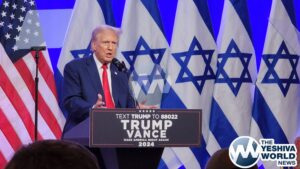
Jewish leaders from across religious denominations came together at an exclusive event hosted by businessman Yehuda Kaploun and his partner Edward Russo at Donald Trump’s National Golf Club in Bedminster, New Jersey, featuring Trump as the keynote speaker, along with philanthropist Miriam Adelson. The event drew Jewish leaders from across the spectrum, including figures from the Chasidic, Litvish, Conservative, and Reform communities, as well as organizations like Young Israel, the OU, and Agudah. The event, which was not a campaign function but rather an invitation-only gathering, included representatives from various segments of the Jewish community—Orthodox, Conservative, and Reform. Approximately 30 leaders from each group were present, including business leaders, rabbis, administration officials, and influencers. Rabbi Mark Rosenberg, Chief Chaplain for the Florida Highway Patrol, delivered the invocation, with Rabbi Yaakov Kaploun offering the traditional blessing of Birchas Kohanim. Kaploun and Russo said the idea for the event stemmed from their regular conversations with the former president about the Jewish community’s growing fears in light of increasing anti-Semitism. The event was meant to provide an opportunity for Jewish leadership from all walks of life to hear directly from Trump about his stance on the issue. The former president made clear his commitment to combating anti-Semitism, emphasizing that it poses a threat not only to Jews but to Americans as a whole. He also stressed the importance of standing in solidarity with Israel, saying that any individuals in the U.S. protesting in support of Hamas would be subject to deportation, and that universities allowing such protests could lose federal funding. Miriam Adelson spoke about her family’s Chasidic roots and the importance of unity in the fight against anti-Semitism. The historic nature of the gathering was widely noted, with participants emphasizing that, despite their religious differences, the shared goal of combating anti-Semitism brought everyone together. Kaploun highlighted that in today’s climate, Jews from all backgrounds face threats, whether in the U.S. or abroad, noting that the Abraham Accords have made Jews feel safer in places like Abu Dhabi than on American college campuses. Rabbi Mark Rosenberg, Chief Chaplain for the Florida Highway Patrol, who delivered the invocation, told YWN: “In these times of growing anti-Semitism and division, it is crucial for our community to stand united in faith and resolve. Our prayers today are not just for protection but for the strength to continue the fight against hatred in all its forms.” Yehuda Kaploun, who hosted the event, told YWN: “This gathering was about bringing together Jewish leadership from all walks of life to address the serious concerns facing our community today. The rising tide of anti-Semitism affects us all, regardless of our differences in practice or belief. It was important for us to create a space where we could unite, listen, and chart a path forward together.” (YWN World Headquarters – NYC)
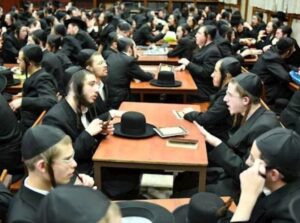
As the recruitment of bnei yeshivos reached the operational stage on Monday, with the first Charedi draftees scheduled to appear at induction centers, Chassidish leaders in Eretz Yisrael instructed bnei yeshivos not to comply with draft orders. Litvish and Sephardi Roshei Yeshivos have already instructed their talmidim not to report to induction centers. A letter published by Chassidish leaders states: “Since the IDF authorities recently sent draft orders to bochurim and avreichim for the purpose of recuriting them into the army, we would like to clarify that Gedolei Yisrael have already ordered that it is forbidden to enlist in the army under any circumstances. Even if the IDF establishes strictly Chareidi Mehadrin companies and brigades, they have already proven that they do not end up sticking with it.” “And even if they partially accommodate Chareidim at first, after a while, it’s impossible to remain Shomer Torah u’mitzvos k’halacha there. Even if they say that now they’ll insist that they can remain Chareidi Mehadrin there, al pi din Torah, they have no ne’amanus [trustworthiness] on this. We know very clearly that there is not one Gadol b’Yisrael who disagrees on this issue.” “Therefore, we would like to instruct, in accordance with the opinions of all Gedolei HaDor, that all bochurim and avreichim who receive draft orders are forbidden to report to induction centers.” “And Hashem Yisbarach should guard His nation Yisrael to withstand all nisyonos and remain Jews faithful to Hashem and His Torah.” (YWN Israel Desk – Jerusalem)
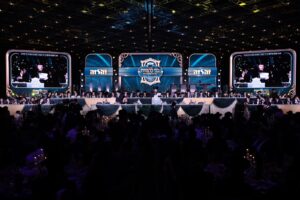
Uplifting moments of deep emotion and “simcha shel mitzvah” were experienced by all at the Bar Mitzvah for the 63 boys as they celebrated this very significant milestone in the presence of Roshei Yeshiva and Gedolei Yisrael. With great joy and excitement, the 63 boys who are members of the “Bnei Melachim” wing of the “Zeh Lazeh” organization, under the direction of Rebbetzin Rotenberg, celebrated a joint Bar Mitzvah with siyumim on mesechtos in an inspiring setting. The event was held at the Binyanei Hauma in Yerushalayim, and entertainment was provided by the “Neshama” choir with the singer R. Zanville Weinberger, and accompanied by Shimi Sklar’s orchestra. The excited boys were seated on a magnificent stage, next to gedolei Yisrael from all communities, Chassidish, Litvish and Sephardi who honored the boys and even spoke in praise of the organization. The guests attending were the families, mentors and friends of the bar mitzvah boys. Each boy has a professional mentor who is handpicked to support and accompany him throughout his childhood. All of the members of the Bnei Melachim have been learning meseches Sukkah and during the bar mitzvah event they made a siyum on the entire mesechta. Prior to the event, the boys made a special trip to the Gedolei Yisrael; Rav Dov Landau, Rav Moshe Hillel Hirsch, Rav Don Segal, Rav Dovid Cohen, Rav Shraga Steinman, Rav Leizer Yehuda Finkel, Rav Shimon Galay, Rav Chaim Feinstein, Rav Mordechai Shmuel Edelstein, Rav Binyamin Finkel, Rav Reuven Elbaz, Rav Nissim ben Shimon, Rav Amram Fried, Rav Shmuel Eliezer Stern, Rav Aharon Toisig, the Toldos Avraham Yitzchak Rebbe, the Nadvorna Rebbe, the Modzitz Rebbe, the Alexander Rebbe, the Zuschke Rebbe, the Biala Rebbe, and the Sadigure Rebbe. At the height of the ceremony, the entire crowd stood together to welcome the Gedolei yisrael who entered the hall to honor the choshuve bar mitzvah boys and the “Zeh Lazeh” organization. The massive audience stood on their feet singing “yomim al ymei melech tosif” in honor of the Gedolei Yisrael headed by Maran Mashgiach HaGaon HaTzaddik Reb Don Segal, Maran the Rishon Letzion HaGaon Rav Yitzchak Yosef and with the participation of Maran Rosh Yeshiva of Mir HaGaon Rav Eliezer Yehuda Finkel, Maran HaGaon Rav David Yosef, Hagaon Chacham Nissim Ben Shimon, the Biala Rebbe , HaGaon Rav Ben Zion Kook, rabbis, and members of the Knesset and public figures. At the conclusion of the siyum, the boys stood to say the Kaddish in memory of their parents z’l as not a single eye was left dry, and the cry of “Amen, yehei Shmei rabba” that erupted from the crowd certainly opened the gates of Heaven to cause a great impact on Klal Yisrael. After the magnificent seudas mitzvah, all the celebrants rose for a mitzvah dance, which concluded with each young man receiving a beautiful and meaningful gift, an elegant silver kos that was given by Reb Don Segal as he lovingly bentched them each with a personal bracha.

By Rabbi Yair Hoffman It is a custom whose roots reach back to the earliest era of our nationhood. In order to make up for the fact that our ancestors actually had slept the night of the Sinaitic revelation, religious Jews stay up all night and study Torah (Midrash Shir HaShirim Rabbah 1:56). The custom does not fault our ancestors for being ill-prepared, for how does one prepare for something that one does not know anything about? Rather, it is a custom that allows Klal Yisroel to shine ever further. MENTIONED IN ZOHAR The practice is mentioned in the Zohar (Parshas Emor 98a). There it even describes the reward that awaits one who studies Torah all night. The all-night learner receives no less than seventy divine blessings from above and is crowned with a special celestial crown of the upper heavens. Then they are inscribed in a special Sefer HaZikaron, a book of memory. LIVING OUT THE YEAR The Arizal writes in Shaar HaKavanos that whoever stays up all night learning is assured that he will certainly live out the year. The Chofetz Chaim records this statement l’halacha (Mishna Brurah 494:1). TIME IS NOT LINEAR There is another interesting point too. Rav Dessler zatzal writes in Michtav M’Eliyahu that time is not a straight continuum. Rather, the nature of time is like a carousel that turns in circles. He writes that each Yom Tov is actually the very same Yom Tov that Klal Yisroel experienced in thousands of years ago in the year 2448. Each day on this carousel of time has its own special unique aspect to it. With this thought of Rav Dessler in mind, let us examine the words found in the Siddur Etz Chaim (page 46a). There it states that fulfilling this practice of learning all night makes it as if we ourselves received the Torah when we hear the Krias HaTorah of Shavuos. It is therefore, as if we were actually there at Har Sinai on the actual day of Matan Torah itself. WHAT TO LEARN? The question is, however, what should one learn? There is a special Tikkun Lail Shavuos that much of Klal Yisroel studies each Shavuos night. It encompasses Torah, Neviim, Ksuvim, Midrashim, and certain mystical parts of Torah. The Tikkun was established by the AriZal HaKadosh. And here is exactly where the controversy begins. THE GREAT DEBATE The Shlah HaKadosh (Tractate Shvuos 47) writes that this order of what to learn has become a Minhag in Klal Yisroel and this is what we should all certainly learn. The Shvus Yaakov, however, (Chok Yaakov 494) writes that this Tikkun was only enacted for the masses of people, and those that are capable of doing so should learn their own study regimen. What is the common custom? Chassidim generally learn the Tikkun, but, generally speaking, Litvaks generally learn their own study regimen. Although, both the Steipler Gaon zt”l and lehavdil bain chaim l’chaim Rav Chaim Kanievsky actually did the Tikkun Leil Shavuos (See Teshuvos Rav Chaim #216). The Sefer Tefilah K’Hilchasa rules that an Avel, a mourner, recites the Tikun Lail Shavuos. Sefardim also generally learn the Tikkun, particularly because the Chida writes (Lev David 31) that one should do so. Indeed, he writes that a group of people who changed the study
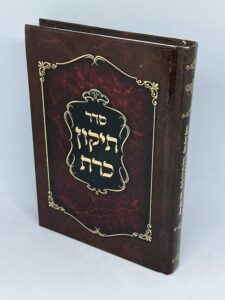
by Rabbi Yair Hoffman Two scenarios: 1] A student’s hand raises in a Rebbe’s class. “Rabbi, I “accidentally” ate total Chometz over Pesach! What should I do now?” 2] A wealthy philanthropist in shul, about to turn sixty, schedules a colonoscopy. Interestingly enough, he had scheduled the test not because his doctor recommended it, but rather because he was about to turn sixty. His concern is that he wants to make sure that he has not incurred the penalty of Kareis – the penalty of being cut-off. In the first scenario, the student is quite scared. Presumably, in the latter case, the man’s actions were based upon the Gemorah in Moed Katan (28a) where Rav Yoseph made a party upon reaching the age of sixty because he made it to sixty and therefore did not incur the punishment of Kareis. Abaye pointed out that there is a second type of Kareis called Kareis of days. Rav Yoseph replied that just outliving Kareis of years is also a reason to celebrate. But in both scenarios we see something disturbing. It is an unfortunate reality that there are many nice people out there who may have something rather serious hanging over them. That something is the Divine punishment known as kareis—being cut off. This penalty is associated with a number of violations: desecrating Shabbos, improper relationships. eating blood, breaching the prohibition of niddah, eating on Yom Kippur, eating cheilev, going onto prohibited places on Har HaBayis…the list goes on. If one ate Chometz by accident, he is chayav a chatas Kvu’ah, if on purpose and above twenty – he is chayav karais. THE QUESTION Kareis, of course, is quite serious. But can anything be done? Is there a means by which kareis can be rectified? If so, how? And why haven’t we heard about it before? Is there a particularly propitious time for it? The answer to this question, fortunately, is “yes.” With the Yom Tov of Shavuos quickly approaching, however, there is now a possibility of double-dipping. But, there are other requirements. LEARNING ALL NIGHT The great AriZal, Rabbi Yitzchak Luria (Shaar Ruach HaKodesh, p. 11b) describes a rectification ritual known as tikkun kareis. He writes as follows: “One who is awake all night and does not sleep at all, and immerses himself in the study of Torah that entire night will exempt himself from one punishment of kareis if, Heaven forbid, he has incurred it. Each night exempts one kareis.” The Chida has a sefer called, “Seder Tikun Karet. He mentions what the Arizal discusses as well. So here we have it. One night of all night-learning can rectify one violation of Kareis. THE THOUGHT PROCESS Rav Chaim Vital, the foremost student of the AriZal, adds more information about the exact kavanos – intentions that one must have while learning Torah for the rectification: One must connect his neshamah to the root above, thus rectifying Adam Elyon. Practically, this means that he should focus and picture his neshama connecting and originally emanating from the upper heavenly sphere. THE FOUR CAVEATS Other caveats that Rav Chaim Vital adds are to refrain from 1] haughtiness, 2] anger, 3] being makpid – being overly-strict with people, and 4] lashon ha’ra. It is, of course, worthwhile to study an overview of each of these
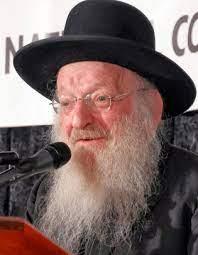
by Rabbi Yair Hoffman It is a question that a number of people are asking right now. When do we commemorate Pesach Sheini by eating Matzah? Do we do it on the night of the 14th, because that is Pesach Sheini? Do we do it at Chatzos of the 14th – because that is when the Korban Pesach was brought? Or do we do it on the night of the fifteenth – which is when it was eaten along with the Matzah? And then there are other possibilities too. Should we do it during all three? It should also be noted that the Chazon ish zt”l held that it should not be done at all, because it is adding on to the Torah (See Orchos Rabbeinu Vol. II p. 97). Rav Chaim Kanievsky zt”l followed his father’s view to eat it. ANSWER It seems that there are a number of customs. Rav Sreya Dublitzky zt”l ate it on the night of the fifteenth (HaMevaser HaTorani, Parshas Emor 5772 p. 3) Rav Yisroel Dovid Harfenes shlita, one of the leading Poskim in Williamsburg recommends doing it both on the 14th after Chatzos and in the evening of the 15th (See Teshuvos Mekadaish Yisroel Sfiras HaOmer #93). If it is difficult for him to wash twice – then he should do it right before shkiya on the 14th. I am informed that the Lubavitcher Rebbe said to do it all three times. The truth is that most people eat it, whenever they are reminded about it. INTERNAL MESSAGE And while we contemplate this question, there is an internal message of Pesach Sheni – that we should not miss. It is a message brought out by the Gerrer Rebbe – the author of the Chidushei HaRim. Rav Yitzchok Meir Alter (1799-1866) was the very first Gerrer Rebbe. A TIKKUN FOR THOSE B’DERECH RECHOKAH He writes that this particular day, Pesach Sheni, is a tikun for those who are perceived as beyond the pale – “B’derech Rechokah” – in his words. They are outside the scope of assistance. To them, to those who could not develop the closeness and Dveikus to Hashem that was emblematic of Pesach – is this second chance. The Psukim in Bahaaloscha tell us: There were men who were impure of the dead, and therefore, could not make the Pesach Korban on that day. They approached Moshe and Aharon on that day. Those men said to him, “We are impure [because of contact] with a dead person; [but] why should we be excluded so as not to bring the offering of Hashemin its appointed time, with all the children of Israel? Moshe said to them, “Imdu – Wait, and I will hear what Hashem instructs concerning you.” A NEW MEANING FOR IMDU The Chidushei HaRim writes that Imdu does not mean wait – but rather it means imdu in Teshuvah and Tefillah. It is not too late, just stand and pursue these two Avodahs and Hashem will help you along the way. The Chidushei HaRim writes that this is the day for the off-the-derech kids that are now in every single one of our communities. Each community among us, whether it be chassidisha, litvisha, or modern orthodox, has children that have left the fold. Look around. They are hanging out on
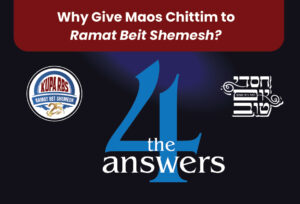
By Gila Arnold Chances are, you know someone living there. Your child in yeshiva or seminary has probably spent Shabbosos in this beautiful, warm, welcoming community. As the number one destination for frum Anglo families, Ramat Beit Shemesh is a community that speaks your language; a place where you can feel at home. And a city that – based on the rate of Anglo aliyah in recent years – may likely one day be your home! Walking through some of the neighborhoods can feel as familiar and comfortable as Lakewood or Passaic. Yet there’s so much more to the people of RBS than you may realize. Take another look at this city… because, as Pesach approaches, 5,000 of its resident families need your help. 1. Fastest-growing city in Israel Contrary to stereotypes, RBS is not just a small enclave of olim; Beit Shemesh is, in fact, the third-largest Charedi city in Israel and the fastest growing city in the entire country! Its population has more than doubled in the past 15 years and today numbers close to 150,000. This explosive growth is thanks both to the arrival of olim from all over the world, and to the rapid development of new neighborhoods – RBS Gimmel, Daled and Heh, as well as many new sub-communities within RBS Aleph, which has attracted young families from across the country. 2. You don’t just hear English in the streets While many, many Anglos make their home here, the majority of the city is not Anglo. There are native Israelis, French, Russians… a veritable kibbutz galuyos! And yet, the Anglos have absolutely made their mark. As a living example of what happens when the best of Anglo and Israeli qualities come together, Ramat Beit Shemesh is a model in so many ways. A model of community. A model of achdus. A model of innovation. And a model of chesed. The Kupa Shel Tzedaka of RBS is a prime example of this. The address for every financial crisis in RBS, the Kupa is run with a level of professionalism, initiative, accountability and big-picture thinking that has made it a model for other Kupas. As the largest and most robust Kupa in the entire country by far, it is a trailblazer and leader, and is sought out by other Kupas for guidance in how to best help the needy. 3. Achdus? Yes! There are many different kehillos within RBS: Chassidish, Litvish, American-style Yeshivish, Dati Leumi and more. In some shuls, you can see men in shtreimels and men in IDF uniforms davening in the same minyan. It’s a kaleidoscope of styles and stripes of Yiddishkeit, but when it comes to the most important values, they are all united. Values like supporting their neediest – no matter what kehilla they’re from. That’s why 67 local rabbanim from across the spectrum of communities have signed a letter requesting our assistance for the Kupa’s Maos Chitim campaign. 4. No, not everyone is a financially-comfortable American. Like any other city in the world, RBS has many families that struggle to make ends meet, and some who suffer from serious financial crisis. With the explosive population growth, its number of families in need of financial support has grown exponentially as well. There are 5,000 families who have turned to the Kupa for
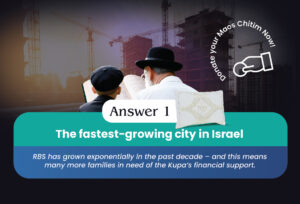
By Gila Arnold Chances are, you know someone living there. Your child in yeshiva or seminary has probably spent Shabbosos in this beautiful, warm, welcoming community. As the number one destination for frum Anglo families, Ramat Beit Shemesh is a community that speaks your language; a place where you can feel at home. And a city that – based on the rate of Anglo aliyah in recent years – may likely one day be your home! Walking through some of the neighborhoods can feel as familiar and comfortable as Lakewood or Passaic. Yet there’s so much more to the people of RBS than you may realize. Take another look at this city… because, as Pesach approaches, 5,000 of its resident families need your help. 1. Fastest-growing city in Israel Contrary to stereotypes, RBS is not just a small enclave of olim; Beit Shemesh is, in fact, the third-largest Charedi city in Israel and the fastest growing city in the entire country! Its population has more than doubled in the past 15 years and today numbers close to 150,000. This explosive growth is thanks both to the arrival of olim from all over the world, and to the rapid development of new neighborhoods – RBS Gimmel, Daled and Heh, as well as many new sub-communities within RBS Aleph, which has attracted young families from across the country. 2. You don’t just hear English in the streets While many, many Anglos make their home here, the majority of the city is not Anglo. There are native Israelis, French, Russians… a veritable kibbutz galuyos! And yet, the Anglos have absolutely made their mark. As a living example of what happens when the best of Anglo and Israeli qualities come together, Ramat Beit Shemesh is a model in so many ways. A model of community. A model of achdus. A model of innovation. And a model of chesed. The Kupa Shel Tzedaka of RBS is a prime example of this. The address for every financial crisis in RBS, the Kupa is run with a level of professionalism, initiative, accountability and big-picture thinking that has made it a model for other Kupas. As the largest and most robust Kupa in the entire country by far, it is a trailblazer and leader, and is sought out by other Kupas for guidance in how to best help the needy. 3. Achdus? Yes! There are many different kehillos within RBS: Chassidish, Litvish, American-style Yeshivish, Dati Leumi and more. In some shuls, you can see men in shtreimels and men in IDF uniforms davening in the same minyan. It’s a kaleidoscope of styles and stripes of Yiddishkeit, but when it comes to the most important values, they are all united. Values like supporting their neediest – no matter what kehilla they’re from. That’s why 67 local rabbanim from across the spectrum of communities have signed a letter requesting our assistance for the Kupa’s Maos Chitim campaign. 4. No, not everyone is a financially-comfortable American. Like any other city in the world, RBS has many families that struggle to make ends meet, and some who suffer from serious financial crisis. With the explosive population growth, its number of families in need of financial support has grown exponentially as well. There are 5,000 families who have turned to the Kupa for

And why they need your help
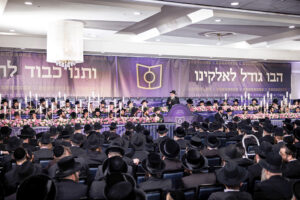
HaGaon HaRav Shimon Galei got up and grabbed the microphone. It was a totally spontaneous moment that left tears of emotion in the eyes of the thousands in attendance. It was in the middle of the Amud HaYomi Siyum at the Armon Hotel in Stamford. Hagaon HaRav Hillel David, shlita, had just finished speaking when suddenly, before the MC, Rabbi Leibish Lish, could step in and introduce the next speaker, the gaon and tzaddik, Rav Galei, grabbed the microphone and exclaimed, “Rabbosai! I want to tell you something very important. A siyum masechta is a time when there is a great eis ratzon in shomayim. If this is said about any siyum, how much more so, a siyum being made by thousands! Now is the time for all of us to daven for Klal Yisrael who are undergoing great difficulty and for all our personal tefillos as well.” Rav Shimon then began singing, “Shaarei shomayim pesach,” a song where we beg Hashem to open the gates of heaven and shower us with bracha from His infinite otzar, treasure house of bracha. The tangible emotion and feeling of Rav Shimon reverberated throughout the hall and the crowd joined him, raising their voices in song. Soon, everyone was on their feet singing, davening. The emotion reached a crescendo and it was clear to anyone there that they were indeed tapping into a unique eis ratzon. The emotion, the tefillos, the tears that were shed, defy description. The truth, however, is that this exalted moment at the Amud HaYomi siyum was a microcosm of the eis ratzon that characterized the entire Shabbos Dirshu Convention this year. Every believing Jew knows that there is nothing that invokes rachmei shomayim more than the koach haTorah. Over the course of Shabbos Dirshu, not only was Torah celebrated by more than a thousand lomdei Dirshu and their families, Torah was being learned in every free minute! As HaGaon HaRav Yechiel Mechel Steinmetz, shlita, the Skverer Dayan of Boro Park, so eloquently highlighted during his shalosh seudos drasha, “I must confess, I have never seen anything like it! I woke up on Shabbos morning at about 5:00a.m. I went downstairs and couldn’t believe my eyes! There were people learning all around the lobby and in the large room designated for learning. Where do you have a Shabbos convention where the program ended the night before at close to 1:00a.m. and then, by 5:00a.m. the next morning people are horeving over their Gemaras? Only at a Dirshu convention where limud haTorah with goals and tests never stop for anything!” Throughout the Shabbos, the extended Dirshu family reveled in spending time with like-minded people traveling the same exalted road of life where their homes and every waking minute is influenced and shaped by goals of learning, reviewing and constant accountability through testing that so exemplifies a Dirshu Yid. The inaugural Amud HaYomi siyum on Masechta Brachos, held on Thursday night in the Armon Hotel’s main ballroom, was a self-contained event that was open to the public, and the public came en masse. The standing-room only crowd was permeated with a profound sense of simcha. This was especially evident after HaRav Shlomo Eliezer Katz, a prominent Amud HaYomi maggid shiur delivered the hadran and entire assemblage burst into song and dance.
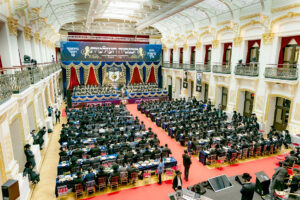
100 Years After Daf HaYomi Inaugurated in Vienna, a New “Yomi” Takes Klal Yisrael by a Storm “This historic maamid transpiring now, in a place where history was previously made, is a maamid that continues the legacy of Torah bequeathed to us right here by the Chofetz Chaim, the Gerer Rebbe, Rav Chaim Ozer, the Chortkover Rebbe and Rav Meir Shapiro, who established the Daf HaYomi in Vienna one-hundred years ago. This is the place where Klal Yisrael came together in unity, the olam hayeshivos and the olam hachassidus joining forces to increase kavod haTorah.” Those words were the beginning of the seminal speech of HaGaon HaRav Dovid Cohen, shlita, Rosh Yeshivas Chevron at the Sofiensäle Hall in Vienna, the same hall where the Knessiah Gedolah was made in the same city, Vienna, where the Daf HaYomi was established one hundred years ago. Rav Cohen’s drasha along with those of numerous Gedolei HaTorah V’Hachassidus, Ashkenazim and Sefardim was but one highlight of a historic journey filled with highlight after highlight and climax after climax. In truth, the word “historic” today has become a bit clichéd, however, Dirshu’s journey to Vienna, Pressburg and Keristier to celebrate the inaugural siyum of the Amud HaYomi program in the Sofiensäle Auditorium in Vienna, the same majestic hall where the famed Knessiah Gedolah was held, was nothing short of historic. The maamad of the siyum attended by leading senior Gedolei Yisrael, Ashkenazim, Sefardim and Chasssidim of all types, all unified under the Torah banner of Dirshu, was a deeply emotionally and inspiring maamad of chizuk. How to describe the sight of senior Gedolim, many elderly, going above and beyond their abilities, shlepping on planes and buses, to come express their support for Torah, and admiration for an organization that facilitates limud haTorah with a breadth and scope, never seen before?! In addition to the actual maamad of the siyum, which was the heartbeat of the whirlwind journey, powerful tefillah rallies were held at the tziunim of the Chasasm Sofer and the Ksav Sofer in Pressburg, and at the tziunim of the famed Chortkover Rebbe and HaGaon HaRav Yosef Engel in the old beis hakevaros in Vienna and the next day at the tziun of Rav Shayele of Keristier. The buses came one after the other stopping in front of the Sofiensäle Hall in downtown Vienna to let off waves of participants. In addition to guests from all over the world, virtually the entire chareidi community of Vienna was in attendance. The palatial hall filled up quickly and then… it happened. The orchestra began to play as the assemblage rose, craning their necks to see the Gedolei Yisrael entering the hall, being welcomed and then walking down the regal red carpet in the center of the hall: Rav Dovid Hofstedter, shlita, Nasi of Dirshu, was flanked by HaGaon HaRav Dovid Cohen, shlita, on one side and HaGaon HaRav Chaim Peretz Berman, shlita, Rosh Yeshivas Ponovezh, on the other. Behind them, walking one by one were numerous Gedolei Torah and Chassidus. The address of Rav Dovid Cohen, Rosh Yeshivas Chevron, set the tone for the evening. Rav Dovid who has enthusiastically supported, advised and encouraged Dirshu’s hanhallah in their Amud HaYomi undertaking said, “Wherever I go people ask me, ‘Perhaps the Amud HaYomi can somehow be seen
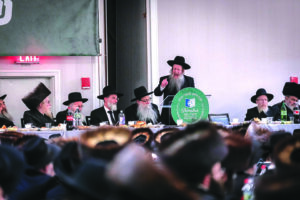
Every Dirshu Convention is a unique spiritual experience, but this year’s convention will have an added dimension – a special, Thursday night, historic Grand Siyum, the first siyum in the inaugural machzor of the new Amud HaYomi program. The Grand Siyum on Masechta Brachos, the first masechta in Shas, will be held at the Armon Hotel in Stamford, Connecticut on 13 Adar I/February 22. Of course, Shabbos itself at the Dirshu Convention is so deeply inspiring that it is difficult to encapsulate with words. A Dirshu Convention is unique. It is a microcosm of the achdus through Torah that symbolizes the most beautiful qualities of Am Yisrael. It is a convention where men and women representing the entire gamut of Torah Jewry – Chassidim of all kinds, Litvish Yeshiva types, Ashkenazim, Sefardim – come together for one reason: to give and gain chizuk in the limud haTorah that both the men and women who attend know has transformed their homes, their family lives and the chinuch of their children. In addition, the wives of lomdei Dirshu walk away from Shabbos on a high. Not only are they deeply inspired by the special women’s programing but perhaps even more so, from meeting other distinguished wives and mothers who truly understand what it means to be part of Dirshu with the inherent thrill of witnessing the hatzlacha of their husbands and/or sons after a test; or upon completion of a masechta, recognizing how, through Dirshu, the entire family becomes elevated and closer to Hashem. One of the highlights of the Dirshu Convention that the lomdim look forward to is the iyun shiur delivered by a prominent Rosh Yeshiva. This year, the shiur will be given by HaGaon HaRav Yitzchok Sorotzkin, shlita, Rosh Yeshiva of the Mesivta of Lakewood, and author of the magnum opus sefarim Gevuras Yitzchok. Another highlight of the convention is the unique shailos and teshuvos sessions with two of the most prominent poskim of our times, HaGaon HaRav Reuven Feinstein, shlita, Rosh Yeshiva of Staten Island and HaGaon Harav Yechiel Michel Steinmetz, shlita, senior Skverer Dayan of Boro Park. This year’s convention will be graced by numerous Gedolei Yisrael that will also include, HaGaon HaRav Dovid Goldberg, shlita, HaGaon HaRav Shlomo Eisenberger, shlita, Roshei Yeshiva of the Telshe Yeshiva of Cleveland, the Kossover Rebbe, shlita, HaGaon HaRav Shmuel Choeuka, shlita, Rav of Beit Haknesset Ohel Simha of Deal, NJ, HaGaon HaRav Nissan Kaplan, shlita, Rosh Yeshiva of Yeshiva Daas Aharon, and numerous others. At the Motzoei Shabbos Melava Malka Siyum on Masechta Bava Kama, Rav Dovid Goldberg, Rosh Yeshivas Telshe, the Kossover Rebbe, Rav Shraga Feivish Hager, Rav Nissan Kaplan, and Rav Dovid Hofstedter will address the massive crowd. The hadran on Masechta Bava Kama will be given by HaRav Moshe Mordechai Lowy, shlita, Rav of the Agudas Yisrael of Toronto.

A video of a guy I had never seen before and still don’t know the name of was recently posted on a rather random WhatsApp group that I am on. In the video, a heimish man films himself complaining about a litvishe man who apparently didn’t say Kaddish Yasom quickly enough for him. To make matters worse for our disturbed filmmaker, the Litvish man didn’t even conform to the Sfard Nusach for Kaddish – Hashem Yeracheim! (Sarcasm intended) Putting the stupidity and pointlessness of the video itself aside, there is something that bothered me tremendously about it. I have now seen that same video posted across multiple WhatsApp groups I’m on, and in each case, the other members of the group engaged in spirited discussion over whether the man has a point or not. May I ask a question: Who cares? When did we become people who give a flying hoot about what a random person’s opinion is – so much so that we’ll sit and argue ourselves senseless over a random incident, knowing full well that our own opinion about it makes no difference either? Once upon a time, to have your opinion heard and cared about by masses of people, you had to be a somebody in the first place. If you weren’t a rav or a known civic leader, nobody was going to pay attention to you – and why should they? But now, with the advent of WhatsApp and social media platforms, literally any random person is awarded attention and oftentimes undeserved respect simply because they took a video of themselves and sent it to others. Why? This bothers me very deeply because I’m worried about why we think the way that we do. Is our thinking nowadays guided by thoughtful people who earned themselves the right to be taken seriously, or are we being guided by people who are nothing more than dopes on WhatsApp? I fear the answer is the latter. NOTE: The views expressed here are those of the authors and do not necessarily represent or reflect the views of YWN. DO YOU HAVE AN OPINION YOU WOULD LIKE TO SEE POSTED ON YWN? SEND IT TO US FOR REVIEW. (YWN World Headquarters – NYC)
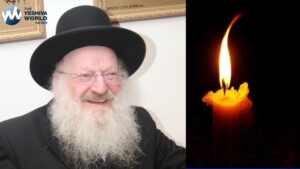
By Rabbi Yair Hoffman for the Jewish Home Rav Elya Ber Wachtfogel shlita, once observed his father, Rav Nosson Wachtfogel zt”l, the Mashgiach of BMG in Lakewood in a remarkable state of joy and Simcha. Rav Elya Ber asked him, “What is the cause of such elation?” Rav Wachtfogel zt”l responded, “I am in a state of joy that the famed Mashgiach of the Gateshead Yeshiva, Rav Mattisyahu Solomon will be joining us in the Lakewood Yeshiva. I anticipate great things to come, b’ezras Hashem, and that is why I am so happy.” And great things did come. Great things that Klal Yisroel will so sorely miss. Rav Matisyahu zt”l clarified matters of Mussar and Torah to thousands and thousands of people and through his insights, knowledge and love influenced us all. “What is the inyan of Kavod HaTorah?” – he would ask. “Among other things, by us showing Kavod to a person or to any other matter of Torah – we are machshir ourselves to become influenced by that person to receive a hashpa’ah from that person or from that matter of Torah..” What is the idea of “Talmud meivi li’ydei Maaseh – that studying Torah brings us to action?” It is only true if we approach it with “binas HaLaiv – understanding of the heart.” If we approach Torah like we would we would approach any other area of knowledge Chas v’shalom, it would have no impact. Aside from his duties in the Yeshiva, Rav Matisyahu zt”l involved himself in communal matters and also with people – with individuals. A number of years ago, there were a number of high school girls in Lakewood who were, unfortunately, not accepted into any school. Rav Matisyahu made a Kol Koreh that no girls high school should open for that semester until these girls were placed. Everyone listened and the girls were placed. Such was the respect and love that the Lakewood community had for the Mashgiach! He had a unique love of people. A young man who grew up in Gateshead and now lives in Cherry Hill New Jersey recalls how when his parents were away and the other children were farmed out to homes of their friends, he ended up in the home of the Solomons. He remembers how Rav Mattisyahu held him on his lap and sang zmiros with him. The kesher continued even when both had moved to the United States. He motivated. He consoled. He stimulated. He inspired. And he advised. He did it to Talmidei Chachomim. To Kollel wives. To Mechanchim. He did it to tzubrocheneh mentchin, and he did it to everyday regular people. A father had lost his precious child. He advised him to use his talents and abilities to help bring about greater Emunah to Klal Yisroel. He gave him brachos and encouragement. He told him, “I know you have the kochos to implement this project.” The man was simultaneously consoled and inspired. The Mashgiach once asked. The Midrash tells us that Hashem posed the question to all of the other nations whether they wanted the Torah. They all inquired as to what was written in it. And most everyone is familiar Klal Yisroel’s answer of “Naaseh v’Nishma.” But what would have happened if Klal Yisroel did not answer in this manner?
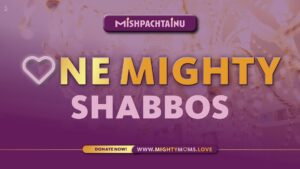
Join Mishpachtainu for One Mighty Shabbos! This Shabbos, as you illuminate your home with candlelight and gather with your loved ones, take a moment to extend your support to the single mothers and almonas in your life who are lighting up their homes alone. Mishpachtainu is launching One Mighty Shabbos this week in solidarity with all the Mighty Moms who courageously raise their children on their own. These incredible women give their all to be strong for their kids, providing, sheltering, and ensuring they feel secure and loved, all while navigating the challenges of loss or divorce. ACT NOW to support your sisters! Throughout the year, for fifty-two shabbosim, Mishpachtainu opens its doors to provide warm and inviting shabbos meals, featuring delicious home-cooked food, inspirational speakers, and heart-stirring zemiros and nigunim. Here, single moms find essential sisterhood, offering chizuk to one another while their children spend weekends with their fathers. “No one should be alone on a shabbos. Shabbos is the most beautiful day of the week. And it is a day when we have to connect to Hashem,” shares Yehudis Sherman, Founder of Mishpachtainu. “When a woman comes here I want her to feel like she has a family, connected, I want them to enjoy what a shabbos is supposed to be like, to have the joy of shabbos.” Hosted in her home, Mishpachtaiunu’s shabbos meals unite women from across the spectrum of yiddishkeit―Ashkenazi, Sephardi, Chadidic, and Litvish. In an exclusive video breaking silence on the challenges of single motherhood, one Mighty Mom reveals: “The table is set fancier than sheva brachos. There were people just like me. It normalized me and made me feel good about myself. I kept coming back again and again. I wouldn’t give it up for the world.” Beyond shabbos, Mishpachtainu offers vital support, food pantries, emergency funding, workshops, holiday gifts and toys to help our Mighty Moms continue to provide for their families and raise happy, healthy kids. Please join us for One Mighty Shabbos this week and support a Mighty Mom in your life by contributing to Mishpachtainu’s life-changing work. Stand with them this shabbos and show them they are not alone. DONATE NOW!
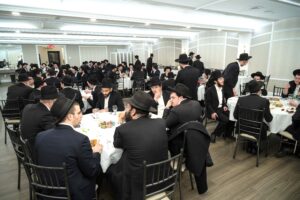
Chaburas Hashas, one of Dirshu’s programs, is tailormade for bnei Torah who desire in-depth learning combined with a schedule that empowers them to complete masechtos in a systematic manner. Beis Medrash Govoha’s Chaburas Hashas chaburah has been extremely successful and currently has more than 120 participants learning in two chaburos, one in the Mizrach Beis Medrash and the other in the Beis Yitzchok Beis Medrash. The mesibah on Chanukah was a result of the desire of the yungeleit in the chaburah, to express their feelings of gratitude to Dirshu for creating a framework for sustained aliyah b’Torah while learning Shas b’iyun. Just the sight of the enthusiastic singing and dancing, the simcha shel mitzvah seeming to burst forth from every corner of the hall, was a testament to the outpouring of joy that each yungerman clearly felt at their fortune in being part of such an elite chaburah. Watching the yungeleit dancing, many with their children who had come to celebrate their fathers’ Torah accomplishments, was deeply moving. Perhaps, one of the most telling aspects of the mesibah was the fact that it only began at 10:00 p.m. Why? So the chaburah should not miss even one night of seder and would complete the quota of the Chaburas HaShas daily learning before beginning the mesibah. Another beautiful component of the evening was seeing so many Yidden from different groups and sectors of Klal Yisrael uniting through Torah, the common bond that unites us as one. The mesibah was attended by many Litvishe bnei Torah alongside Sefardic bnei Torah standing shoulder to shoulder with Chassidishe bnei Torah, all united in a common goal: to learn two-and-a-half blatt of Gemara, Rashi, Tosafos and selected mefarshim and be tested monthly on what they learned. In his remarks, one of the Roshei Chaburah, Rabbi Avrohom Zelig Krohn, highlighted a unique aspect of the chaburah, connecting it with Chanukah. He said that one of the things the Chashmonaim‘s adversaries were intent on stopping was the daily bringing of the korban tamid. The korban tamid signifies the idea that there is no break when it comes to avodas Hashem. How? By showing that just as every day, morning and night, the korban tamid was brought in the Beis Hamikdosh without respite, so too when it comes to any area of avodas Hashem, the idea of temidus, of constancy is the key to success. “That is why the chaburah was so intent on not missing even one night of learning. That is why we only started this wonderful gathering after first completing the kollel’s night seder learning!”
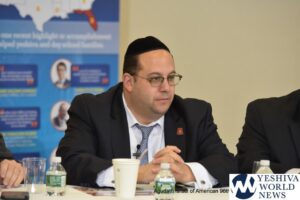
Lakewood residents are heading to the polls today, heeding the unanimous call of the gedolim of Lakewood and beyond to elect Avi Schnall as their new representative in the New Jersey Assembly. The endorsements Avi Schnall has received from gedolim across the spectrum – from Litvish to Chasidish to Sfardi – have created an unprecedented coalition of Daas Torah backing a specific candidate. Despite the naysayers and individuals spreading blatantly false rumors that some gedolim have retracted their endorsements, YWN has been in direct contact with nearly every gadol that signed a letter of support or endorsement of Avi Schnall, and has confirmed that every one of them remains staunchly in support of his candidacy. The support is of no surprise – as the director of Agudah’s New Jersey Office, Avi Schnall has already accomplished tremendous things for the Lakewood kehilla, and being in the Assembly would turbocharge his efforts to advance the kehilla’s interests. (YWN World Headquarters – NYC)
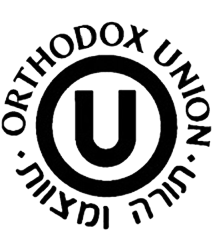
By Rabbi Yair Hoffman There was a remarkable Talmid Chochom who, by all accounts, represented serious Rosh Yeshiva material. He plummeted the depths of Gemorah and halacha. He was fully fluent in Chassidus and the pathways of Litvishe Mussar. He authored numerous seforim, had exemplary midos, and had all the qualities of great leadership leadership. But, this remarkable individual was unjustifiably marginalized like so many others in our community. Why? Because he was single and faced a dirty little secret that exists in our community. That secret is best explained and understood with a term from the lingua-franca of the yeshiva world: We are not “gorais” single people – both “single women” and “single men.” And just in time for Rosh HaShana, and the aseres yemei Teshuvah, the OU has issued a remarkable and ground-breaking study, telling us just how to address this problem. The authors who conducted the research were Matt Williams, Michelle Shain, Guila Benchimol, Channah Cohen and Elisha Penn. They also conceived of the study, design the study, collected and analyzed all the data, wrote it, revised it and revised it again and again. And, to use contemporary parlance – “they nailed it.” These authors (and the OU itself) deserve a tremendous yasher koach. What they discovered could be a new set of “al chaits” in vidui – all involving an abnegation of the remarkable mitzvah of v’ahavta larayacha kamocha. Al chait that we have caused single men and single women to feel a sense of loneliness during their search for a shidduch and thus negated this Mitzvah. Al chait that we have made the single men and single women in our community feel invisible, blamed, and judged. Al chait that we have treated them like children. Al chait that we have inadvertently hurt them and have criticized, degraded, and dismissed them. These four “al chaits” could actually be put on a Post-It note when we recite the vidui for the Mitzvos assei and lo saaseh. [This is what the Chayei Odom essentially did when he applied contemporary examples for the other al chaits.] The OU report respectfully has brought this issue front and center and seeks answers to five crucial questions: How can we recognize single men and women as full, adult members of our community, rather than treating them like “boys” and “girls”? What changes to language and behaviors, on both an individual and communal level, would convey this recognition? How can we create a place for belonging within the Torah community for those who are searching for a spouse, and for those who perhaps may not find one? How can we expand communal structures and roles to include single people? How can we offer single men and women opportunities to learn more about relationships, as they so desire? Essentially, the report’s recommendations are: We need to increase the conversation. We have organizations for addictions, for fertility issues, (even for people in prison) – but this issue has not been adequately addressed We have to first appreciate who they are and not refer to them disrespectfully by calling them “boys” or “girls.” Even the term “singles” identifies them by this one description – and they are so much more. Invite single men and women for Shabbos and Yom Tov meals more frequently and to do
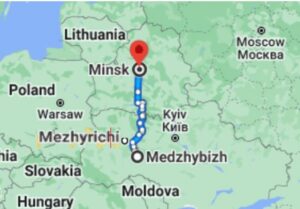
By Rabbi Yair Hoffman for Mwap [Please note that the dates below may not be accurate – they are the author’s best estimates of the accuracy of previously researched data]. Many of us had grown up with seforim, stories, and bits and pieces of information of different Gedolim in the Chassidish world. They were taught and told to us by Rebbeim of Chassidish extraction. We then, of course, entered the world of the Vilna Gaon and the Yeshiva movement. We were the spiritual heirs to the great yeshivos of Volozhin, and those established by Volozhin talmidim. Volozhin, of course, was established by Rav Chaim Volozhin, the best-known student of the Gra. Most of the Yeshivos in which our Rebbeim or our Rebbeim’s Rebbeim had learned were originally staffed by Gedolei Torah who had studied in Volozhin. And although we chose our Litvish heritage, we still admired and loved our Chassidish legacy taught to us by some family members and our Rebbeim of youth. Yet, we really had no knowledge of the history of who they were. In this short overview, we can gain a basic understanding of that history. There is something that educators call a “schema.” A schema is a framework of knowledge in which future pieces of information can be added to it – kind of like a Leggo-board. When you have a Leggo-board, pieces of Leggo can fit into it nicely, and we can build upon it. Leggo structures without a Leggo board are often ephemeral structures. They are weak and hazy. And so, here goes. Reb Dov Ber, also known as the Maggid of Mezeritch (1710-1762)?, was one of the primary Talmidim of the Baal Shem Tov (1698-1760). It seems that he first encountered the Baal Shem Tov in 1758 to seek medical help. He decided to travel the 123.4 mile trip south – from Mezeritch to Medzhybizh. Prior to that he had studied under the famed Acharon, Rav Yehoshua Falk (1680-1756), the author of the Pnei Yehoshua, and was a master Talmudist. He was also captivated by the writings of the Ramchal, which he had studied in manuscript form. Like many others in his time, Reb Dov Ber was fascinated by the teachings of the Arizal (1534-1572) and Rav Chaim Vital (1542-1620). He had also adopted practices similar to a Nazir. His encounter with the Baal Shem Tov in the Baal Shem Tov’s home in Medzhybizh (western Ukraine), profoundly changed him. One account has it that at the first encounter Reb Dov Ber was not impressed and decided to leave and go back home. The Baal Shem Tov then pulled out an Eitz Chaim written by Rav Chaim Vital and had asked Reb Dov Ber to explain it. The Baal Shem Tov then proceeded to explain it far better and with more Neshama to it. After that, Rav Dov Ber whole-heartedly adopted the ways and methods of the Baal Shem Tov. He left many of his Nazir like practices, but not all. Reb Dov Ber still had medical issues, and was lame in one foot. The Baal Shem Tov’s son, Tzvi, took over the Chassidus of his father, but only for a year. He relinquished the future leadership to Rav Dov Ber. One account has it that Reb Tzvi said, “My father came to me
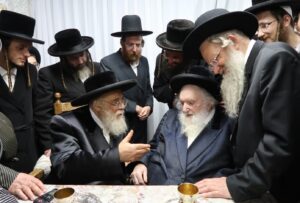
by Rabbi Yair Hoffman for 5tjt.com The Toldos Aharon Rebbe, Rav Dovid Kahn, arrived this week (Monday) at the Har Nof residence of HaGaon HaRav Moshe Sternbuch, before his departure to Austria – for the annual dacha, vacation, and asked him to petition in prayer about the state of the people of Eretz Yisroel. [This is not the Toldos Avrohom Yitzchok Rebbe that comes to the Five Towns, but we are open]. During the conversation, Rav Sternbuch told for the first time, stories of greatness that he saw in his youth with the holy Gaon Rav Elchanan Wasserman zt”l before the Holocaust. Interestingly enough, Rav Sternbuch asked the Rebbe, “Why are you leaving Eretz Yisroel, after all, every moment that you sit here, you are fulfilling the Mitzvah of Yishuv Eretz Yisroel?” As can be seen in the video, Rav Sternbuch does not pursue the issue further, once he sees that the Rebbe is going anyway. TWO FASCINATING QUESTIONS This brings up two fascinating question: When is it permitted to leave Eretz Yisrael? Is it permitted to leave Eretz Yisroel for a vacation? While we are at it, we may also deal with the question of what the reason for the mitzvah of remaining in Eretz Yisroel actually is. Are we dealing with a Biblical or rabbinic prohibition? And even if it is primarily rabbinic in nature, is there ever a Biblical mandate regarding this? As an interesting aside, Rav Chaim Kanievsky zatzal once asked his uncle the Chazon Ish if it would be permitted to go swimming at a beach wherein the ocean is the actual border of Eretz Yisroel (cited in Rav Yitzchok Zilberstein’s Avnei Chain 5:2). The Chazon Ish answered that the area that one swims in is still considered part of the land of Eretz Yisroel. According to this, however, it is possible that someone taking flying lessons may not fly over the waters on account of the possible prohibition of leaving Eretz Yisroel, unless he is doing so for the purpose of a Mitzvah. FOUR MAIN REASONS The reasons for the prohibition of leaving Eretz Yisroel cited by the authorities are actually rather varied: The Ramban (Bamidbar 33:53) explains the prohibition on account of the mitzvah to settle in Eretz Yisrael. The Ramban, if we recall, is of the opinion that the Torah mitzvah to settle the land of Israel is applicable nowadays, as well. The Rashbam (Bava Basra 91b) explains that the prohibition exists because by leaving the land, one is actively removing oneself from the mitzvos that are uniquely dependent upon being present in Israel. The Lechem Mishnah (Melachim 5:12) explains that because Israel is holy, it is forbidden to leave it. Finally, a fourth reason given is that prayer in Israel is much more effective, and the prohibition was made so that the nation of Israel not remain bereft of those praying on its behalf in the place where prayer is most efficacious. BIBLICAL OR RABBINIC? Is it a Torah or rabbinic prohibition? Rav Moshe Feinstein, zt”l (Igros Moshe, Y.D. Vol. I, No. 120), indicates that it is rabbinic. That being the case, in a case of a doubt there is greater leniency. The language of the Maharitatz (Siman 85), however, indicates that he learns the prohibition as Biblical – not like

Rabbi Akiva Wagner, the beloved rosh yeshiva and Gadol of Toronto Yeshiva, who dedicated his life to the yeshiva and its bochurim, passed away on Monday, 17 Iyar, 5783. He had just celebrated his 55th birthday the day before and left thousands of Talmidim grieving his loss. Born in Toronto, Canada, on 16 Iyar, 5728 to Rabbi Refoel Menachem Nochum and Batya Wagner, Akivah was born into a family that was ingrained with a love of Torah. His father was a respected talmid chochom, and his mother was the daughter of Harav Dov Yehuda Schochet, a distinguished rov in the Toronto community. As a young bochur, Akiva learned in Litvishe yeshivos, was niskarev to Chabad by his Schochet uncles, and began studying in Oholei Torah in Crown Heights. In 5749, he was sent on bochur shlichus to Yeshiva Ohr Elchonon Chabad in Los Angeles, under the leadership of his uncle Harav Ezra Schochet After completing his shlichus there, he returned to New York to study in the Central Yeshivas Tomchei Tmimim in 770. A number of years after his marriage, he founded the Lubavitch Yeshiva of Toronto, and he began to serve as its rosh yeshiva. Over the next decades, Rabbi Wagner fully dedicated himself to the success of the yeshiva and each of the bochurim, showing a genuine example of the love of Torah and a fire of Chassidus Even after a horrible illness was discovered, Rabbi Wagner invested every moment and drop of energy he had to continue building the yeshiva, delivering shiurim and leading farbrengens whenever he was able. He is survived by his mother, Mrs. Batya Wagner, his wife, Mrs. Rochie Wagner, and their children Rabbi Yitzchok Wagner – Richmond, CA; Itty Leiberman – Toronto; Rabbi Mendy Wagner – Toronto; Menachem, Yisrolik, Mushkie, Dovi, Nossi, Goldie, Shmuli, Levi, and Avremi. He is also survived by his siblings, Mrs. Adina Jacobson – Yerushalayim; Rabbi Meir Wagner – Toronto; Mrs. Elisheva Lopian – Los Angeles, CA; Mrs. Shula Isaacs, – Toronto; Rabbi Noam Wagner – South Africa; Rabbi Dov Wagner – Los Angeles, CA; Rabbi Yaakov Wagner – Morristown, NJ; Rabbi Yitzchok Wagner – Lakewood, NJ; Rabbi Avromi Wagner – Lakewood, NJ; Mrs. Bracha Back – Lakewood, NJ. A special emergency fund was established to help his wife and 12 children through this painful time. Please donate and help the family continue on his legacy. DONATE NOW

by Rabbi Yair Hoffman for 5tjt.com It is a question that a number of people are asking right now. When do we commemorate Pesach Sheini by eating Matzah? Do we do it on the night of the 14th, because that is Pesach Sheini? Do we do it at Chatzos of the 14th – because that is when the Korban Pesach was brought? Or do we do it on the night of the fifteenth – which is when it was eaten along with the Matzah? And then there are other possibilities too. Should we do it during all three? It should also be noted that the Chazon ish zt”l held that it should not be done at all, because it is adding on to the Torah (See Orchos Rabbeinu Vol. II p. 97). Rav Chaim Kanievsky zt”l followed his father’s view to eat it. ANSWER It seems that there are a number of customs. Rav Shreya Dublitzky zt”l ate it on the night of the fifteenth (HaMevaser HaTorani, Parshas Emor 5772 p. 3) Rav Yisroel Dovid Harfenes shlita, one of the leading Poskim in Williamsburg recommends doing it both on the 14th after Chatzos and in the evening of the 15th (See Teshuvos Mekadaish Yisroel Sfiras HaOmer #93). If it is difficult for him to wash twice – then he should do it right before shkiya on the 14th. I am informed that the Lubavitcher Rebbe said to do it all three times. The truth is that most people eat it, whenever they are reminded about it. INTERNAL MESSAGE And while we contemplate this question, there is an internal message of Pesach Sheni – that we should not miss. It is a message brought out by the Gerrer Rebbe – the author of the Chidushei HaRim. Rav Yitzchok Meir Alter (1799-1866) was the very first Gerrer Rebbe. A TIKKUN FOR THOSE B’DERECH RECHOKAH He writes that this particular day, Pesach Sheni, is a tikun for those who are perceived as beyond the pale – “B’derech Rechokah” – in his words. They are outside the scope of assistance. To them, to those who could not develop the closeness and Dveikus to Hashem that was emblematic of Pesach – is this second chance. The Psukim in Bahaaloscha tell us: There were men who were impure of the dead, and therefore, could not make the Pesach Korban on that day. They approached Moshe and Aharon on that day. Those men said to him, “We are impure [because of contact] with a dead person; [but] why should we be excluded so as not to bring the offering of Hashemin its appointed time, with all the children of Israel? Moshe said to them, “Imdu – Wait, and I will hear what Hashem instructs concerning you.” A NEW MEANING FOR IMDU The Chidushei HaRim writes that Imdu does not mean wait – but rather it means imdu in Teshuvah and Tefillah. It is not too late, just stand and pursue these two Avodahs and Hashem will help you along the way. The Chidushei HaRim writes that this is the day for the off-the-derech kids that are now in every single one of our communities. Each community among us, whether it be chassidisha, litvisha, or modern orthodox, has children that have left the fold. Look around. They are
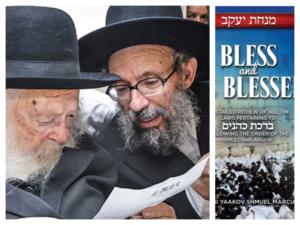
By Rabbi Yair Hoffman for 5tjt.com Recently, I ran into Rav Chaim Kanievsky zatzal’s son in law, Rav Yitzchok Koledetsky shlita lbc”l, who was leaving the Vasikin minyan in the Agudah shul before davening had finished. Where was he headed in the middle of davening? I had previously translated for him at a number of schools and he gave me a warm shalom aleichem. He then explained (without me asking) that he was headed to the Sefardic Minyan in the trailer in the White Shul parking lot of the White Shul to hear Birchas Kohanim. Yom Tov is around the corner, and we all need to appreciate the gift that is Birchas Kohanim. And what better way to do that then to learn through Rabbi Yaakov Marcus’s absolutely remarkable sefer on Birchas Kohanim, “Bless and Be Blessed?” The sefer has 206 pages and is not divided into chapters but rather it contains detailed answers to some 67 questions. It has haskamos and michtavei bracha from Rav Dovid Cohen shlita, Rav Yaakov Forcheimer shlita, Rav Avrohom Schorr shlita, and Rav Yeruchem Olshen shlita. For the more dvanced talmid chochom, he has sources on the bottom of the page along with explanations. It also has an extensive index and a section in the back with a full translation of Birchas Kohanim. Some interesting rulings: #56 – May a Kohen who is dishonest in business recite birchas Kohanim? The Rambam in Hilchos Tefillah 15:6 rules that he can. (The Shitos Kamai explains that the blessing comes from hashem and the Kohanim are mere conduits). #2 – Generally speaking for a minyan – the custom is to allow it to be conducted when there are six who have not davened – with an additional four people who have already davened. Rabbi Marcus cites the opinion of Rav Moshe Shternbuch in Teshuvos v’Hanhagos Vol. IV #36) that for Birchas Kohanim – this should be avoided. #43 – This question and answer discusses where exactly the recipient of the brachos should be standing. Many people somehow are aware that one must stand face to face with the Kohanim and behind them. Some people do avoid sitting behind a pillar. Technically, this is permitted, however there is a separate reason that Rabbi Marcus himself suggests as to why someone should avoid sitting behind a blocking pillar – to show the chavivus HaMitzvah – that the Mitzvah is beloved to him. He cites this concept earlier (on page 109) from the writings of Rav Eliyahu Pinchas Mireina of Bnei Brak zt”l. #26- What happens if someone skips even just one word of Birchas Kohanim? Believe it or not, he has not fulfilled the Mitzvah and he must go back from the word that he missed and recite all of them aloud from then on. Also, unlike other brachos and tefilos – Birchas Kohanim may only be recited in Hebrew. If one does so in English or any other language – he has not fulfilled the Mitzvah and it is a bracha levatalah. In #35 we discover another halachic difference between Chabad practice and that of the Litvish velt. According to standard practice (as cited in the Mishna Brurah 128:64) the person who calls out “Kohanim” whenever there are two or more kohanim present should wait until the majority finish their amains. The
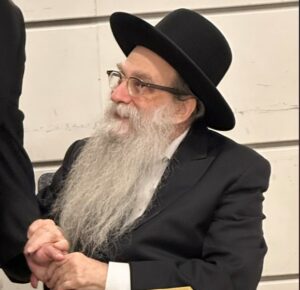
by Rabbi Yair Hoffman for 5tjt.com This article is printed in honor of the Bris Milah of our new einekel, who was named after Rabbi Yitzchok Wenger z”l of Lakewood, NJ, who exemplified “ivdu es Hashem b’simcha.” The author can be reached at [email protected] At the seudas haBris, Rav Yeruchem Olshin shlita posed the question as to the nature of the third bracha of the Bris Milah – “Boruch atta Hashem elokainu melech ha’olam asher Kadesh yedid mibeten” etc. Why is it said over a kos, a cup of wine? He cited the words of teh Turei Zahav who stated that it is so that Shira be recited. What is the nature of this Shira? It is so that we rejoice that we have merited to be an Eved Hashem – a servant of Hashem. The Bris Milah, which is a mark of pride (as we say in bentching, v’al brischa shechasamta bivsareinu” is something of which we show so much joy, that it reaches the level of shira, a song of utter joy. [The author is reminded of a statement of Rav Moshe Feinstein zt”l, “The expression of es is shver tzu zein a yid should never be voiced. It is entirely untrue. Rather we should say it is beautiful and joyous to be a yid.”] Below is a rather long overview of Bris Milah. Perhaps it is best to print out for reading. THE MITZVAH OF MILAH It is a positive Mitzvah in the Torah for a father to circumcise his son . This Mitzvah is greater than other positive Mitzvos in the Torah . If the father did not circumcise his son, it is incumbent upon the Beis Din or the community to do so. If they did not do so, then he is obligated to circumcise himself when he becomes of age. If he did not do so, then he incurs the punishment of Karais . Each day that the Bris Milah is not done one incurs these punishments . One may not circumcise a baby without the father’s permission, unless the father did not do so. In such circumstances Beis Din performs the Milah against his will (Tur citing Rambam) . Nowadays, however, when the beis Din does not have temporal power this is not generally done. A woman is not obligated to circumcise her son . If a father does not know how to circumcise and there is a Mohel who does not wish to circumcise for no fee, Beis Din must censor the Mohel, for this is not the manner of the descendants of Avrohom. Indeed, the opposite is true, Mohalim compete for the opportunity to circumcise. If the Mohel remains adamant and the father cannot afford to pay his fee, it is likened to a case where there is no father and the Beis Din is obligated to circumcise. Therefore, Bais Din can force the Mohel, since there is no one else to circumcise. TIMING OF CIRCUMCISION A circumcision is not performed at nighttime, rather one waits until sunrise of the eighth day of his birth . If it was performed after dawn, however, the Mitzvah has been fulfilled . One may perform the circumcision throughout the entire day, however, there is a concept that the zealous perform Mitzvos early, and therefore

Yeshiva Torah Temimah, a bastion of Torah in Flatbush for decades, has sold one of their buildings to Satmar. The purchase of the building was revealed at a Motzei Shabbos dinner benefiting the Mosdos of Satmar in Boro Park under the leadership of the Satmar Rebbe of Williamsburg, HaRav Zalman Leib Teitelbaum. The building being purchased by the chassidus is located on the corner of Ocean Parkway and Ditmas Avenue, and housed Torah Temimah’s Mesivta and Bais Medrash for decades. YWN notes that the building being sold has already been occupied by Satmar Yeshiva for the past few years. Yeshiva Torah Temimah was founded and built by the Rosh Yeshiva, Rabbi Lipa Margolis, in 1958. The yeshiva grew to prominence between 1980 and 2000. He was Niftar in January 2022. The Rosh Yeshiva, Hagoan HaRav Shlomo Feivel Schustal, left the Yeshiva around 10 years ago, and opened his own Bais Medrash in Lakewood due to the number of Bochrim at the yeshiva growing smaller as the Litvish community in Flatbush declined. Satmar announced that the name of the building will be “Binyan Lipa Friedman,” who donated $5 Million dollars towards the purchase. Lipa is a son of the famous “Moshe Gabbai” of Satmar. Torah Temimah still runs a vibrant Yeshiva K’tana and Mesivta in their original building on the same street, located at 555 Ocean Parkway. Sources tell YWN that the funds of this building sale will not be going to the current Yeshiva Torah Temimah on Ocean Parkway, but to the other Mosdos of the original Torah Temimah, currently located in Staten Island. The news is bittersweet for thousands upon thousands of Bochrim (now married with children) who learned in Torah Temimah. Audio below of Satmar rebbe at last night’s dinner: Video below at the dinner: (YWN World Headquarters – NYC)
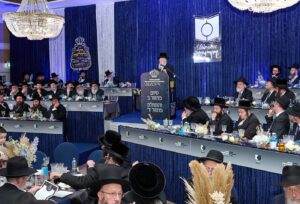
By Chaim Gold “In our city of Antwerp, we have morei horaah and poskim who have completed the Dirshu Kinyan Halacha program, both the first five-and-a-half-year machzor and the second five-and-a- half-year machzor. They have covered all major areas of horaah and are incredibly learned and expert morei horaah!” Those were the words of HaGaon HaRav Aharon Schiff, shlita, Rav of the Machzikei Hadas umbrella kehillah of Antwerp’s Charedi community, said at the Dirshu Kinyan Halacha European siyum, held at the prestigious Hall of the Aviation Suite, Thistle London, Heathrow. HaGaon HaRav Moshe Shaul Klein, shlita, Rav of the Ohr Hachaim neighborhood of Bnei Brak and posek of the Mayaanei Hayeshua Hospital, one of Eretz Yisroel’s leading poskim, related that many of the morei horaah in Rav Wosner’s beis din have similarly completed Kinyan Halacha. Rav Klein said, “Where do you have yungeleit who even during the bein hazemanim of erev Pesach and erev Sukkos when they are helping at home, spend their late nights learning and reviewing halacha for their twice yearly Kinyan Halacha bechinos at the end of bein hazemanim?!” HaGaon HaRav Yechiel Mechel Steinmetz, shlita, Skverer Dayan of Boro Park and one of America’s senior poskim, candidly remarked at the American siyum, “All of us morei horaah must give special thanks to Dirshu and its Nasi, Rav Dovid Hofstedter, shlita. There is a tremendous shortage of poskim muvhakim in Klal Yisrael. This shortage places tremendous pressure on existing poskim who are too few to serve the many who come with sheilos. Dirshu already has a record from previous machzorim of Kinyan Halacha, of preparing those who are able to persevere and complete the unremitting program to become poskim muvhakim who are ready to serve Klal Yisrael.” Those words of the gedolim were just some highlights of a remarkable series of siyumim in Eretz Yisrael, Europe and America to celebrate the accomplishments of more than 400 new morei horaah, who have completed the grueling five-and-a-half-year program of the third machzor of Kinyan Halacha and will go on to become morei horaah who will enrich Klal Yisrael and help Jews all over the world keep halacha. The siyumim held on Motzoei Shabbos parshas Vayigash at the Binyanei Haumah Convention Center in Yerushalayim, the following night in London, at the Hall of the Aviation Suite, Thistle Heathrow and two nights later, on Motzoei Asarah B’Teves at the Eminence Hall in Boro Park, featured addresses by senior Gedolei Yisrael. A Siyum Like No Other Anyone who attended any of the siyumim could not but be deeply moved by the atmosphere of pure simcha that permeated the air. The siyum of Kinyan Halacha is like no other siyum. It is a culmination of a grueling five-and-a-half-year program where the lomdim learn Yoreh Deah chelek aleph and beis as well as large parts of hilchos Shabbos, hilchos hagalas keilim and other areas of halacha with great iyun starting from the Gemara, continuing on to the Tur with its mefarshim, carrying on to the Shulchan Aruch and the major mefarshim on Shulchan Aruch right up until the practical halachic rulings of the poskim of the last generations. For those who have completed the first program there is a second five-year program that covers even more obscure areas of halacha such as hilchos mikvaos, ribbis,
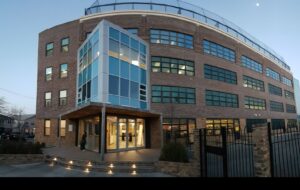
By Rabbi Yair Hoffman One month ago, the Far Rockaway/Five Towns community lost an extraordinary woman. Rebbitzen Toby Weitman a”h, was one of the builders of the Torah community in Far Rockaway and the Five Towns, who personified a regal and quiet dignity. The Bais Yaakov she had built side by side with her husband, the Torah Academy for Girls has, throughout six decades, educated several thousand bnos Yisroel – the great-grandmothers, the grandmothers, the mothers, and the young ladies of this community. But aside from her work in building a remarkable Mossad of Torah, Rebbitzen Weitman a”h was an extraordinary woman in and of herself. She was the paragon of a baalas chessed, and her warmth and care for every kind of Jew was awe-inspiring. What follows is just a small and inadequate glimpse of who this very special woman was. Rebbitzen Weitman a”h, nee Rosengarten, was born in Toronto in the early 1930’s – during a time where a Torah education for girls did not yet exist. Her parents, however, were Bobover Chassidim from Cracow, Poland, who managed to arrive in Canada before the Churban. They imbued her with a love of Torah and its values. She was one of seven children that survived infancy. Her parents provided their children with a remarkable chinuch. They taught her true dveikus bashem and to enjoy and appreciate davening and saying Tehillim. When Rav Yaakov Kamenetsky zt”l arrived in Toronto, he became a strong influence on the family. Her mother would take the young Toby Rosengarten out every Friday night – and say, “Let’s go see a tzadaikkes” and she would take her to Rebbitzen Kamenetsky. Even though her mother was chassidish and Rebbitzen Kamenetsky was litvish – she nonetheless considered her such a tzadaikes that she would bring her 8 year old- daughter to see her. The chinuch she received was successful. Her dveikus bashem was awe-inspiring. Her Tehillim was constantly on her lips. But there was more. Rebbitzen Weitman was a throwback to a previous time – a time of sheer selflessness, of ahavas habrios and ahavas Yisroel. She greeted everyone with a saiver panim yafos that reflected this. Her genuineness and authenticity was readily apparent to anyone who came in contact with her. The young Toby Rosengarten had a close friend growing up in Toronto, who was not shomer Shabbos – and yet because of her boundless ahavas Yisroel, she remained close to her for the majority of her life. She interacted with so many people on a very personal level. She took the time to get to know them. As she was growing up, some three hundred and thirty seven miles away, in Montreal, a young and dynamic Rav, a student of Torah VaDaas and of Beis Medrash Elyon, started a day school and developed a reputation as a master pedagogue. They did not meet, however. Eventually, this young man, Rabbi Moshe Weitman, took a position in Monticello, New York as the Rav of the Monticello Shul known as the Landfield Avenue Synagogue. He was a dynamic Rav, but still single. During the summer months, the young Toby Rosengarten did go to summer camp in the Catskills. She attended Rabbi Newhaus’ Camp Bais Yaakov for six years. Her father would bring her over the border to Buffalo,

After seeing the responses to my original letter, I feel the need to respond. Firstly, I want to address the many hundreds of suffering girls who may have gotten hurt by the horribly insensitive and shameful comments that some have written. Please know that those commenting are just a few unpleasant people, while the vast majority of us feel your pain and want to help. They know that this situation is not your fault and that you are all amazing girls who deserve the best possible partner in life. I would also like to address those who commented negatively by expressing dismay at my lack of apathy to the many hundreds, if not thousands, of girls who are struggling mightily to deal with this crisis. My appeal was to the hearts of Klal Yisroel to feel the pain and act upon it. Instead, sadly, it seems that the hearts of some are not only not pained, they are also ready to heap scorn and openly mock their suffering nieces, friends, and neighbors. Regarding the topic at hand, I first want to clarify which crisis I am discussing. I am referring to the situation going on now in the yeshivish communities where a decent boy gets very many suggestions while a great girl (whose father is not wealthy or choshuv) gets very few suggestions. Such girls can literally wait months – and yes, sometimes years – to get a ‘yes’ from a boy. For these girls, the problem at hand is not them being “selective.” You need something to select from to be selective. The fact is that they are not being given even the most basic chance of finding a husband. There are girls in their twenties who never went out on a date! This is a very real scenario playing out right now in hundreds of homes in Lakewood, Brooklyn, Monsey and in many out-of-town communities. Whoever has other issues that they want to discuss is welcome to pen a letter of their own, but I ask them to please not distract from the matter at hand. To those who ridiculously question my not following Daas Torah, my response is: Do you not consider Rav Elya Ber Wachtfogel shlit”a to have daas torah? Did you see his interview with Mr. Gary Barnett before you wrote your comments? You also seemed to have missed the kol koreis signed a few years back by all the leading gedolim in both Eretz Yisroel and America urging bochurim to get married younger. Furthermore, a substantial portion of the Roshei Yeshiva convincing bochurim to continue learning in their shiur for three plus years, thereby creating a larger age gap, are fine lamdonim in their forties and low fifties. I am pretty sure that all sane people would agree that saying a shiur to twenty-year-old bochurim does not automatically give a person the distinction of being the standard bearer of daas torah. They are fine people who are working hard to make their bochurim into lamdonim; however they are not gedolim, nor do they claim to be. They do not carry the achrayus for Klal Yisroel, nor do they claim to. Moreover, I do not think there is any comfort for a girl or her family in knowing that the reason that she may rachmana

One of the most commonly cited solutions to solve the shidduch crisis is simple and straightforward: lower the age at which bochurim begin dating. Many people seeking to alleviate the crisis peddle the concept of bochurim dating younger as the salve to heal the litvishe world’s shidduch crisis woes. However, YWN’s last poll demonstrates that such an idea doesn’t have that much broad support and would thus be difficult to implement. The poll, which had well over 13,000 respondents, found that a 66.7% of people think that bochurim should begin dating anywhere between the ages of 21 and 23. That would suggest that most people are not very “pro” dropping the age significantly. Notably, just over 20% of respondents said bochurim should begin dating at 23. If a fifth of the mainstream yeshiva community believes that bochurim shouldn’t be dating until 23, there is no practical way of getting enough people onboard the idea of lowering the dating age in any significant way. Based on this poll, other solutions would have to be found to solve the shidduch crisis. [yop_poll id=”7″] (YWN World Headquarters – NYC)
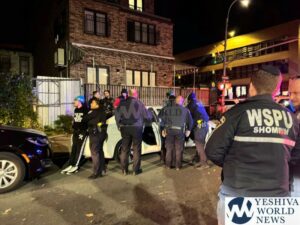
A new report from Americans Against Antisemitism found that a stunning majority – 94% – of anti-Jewish assaults in New York City between 2018 and 2022 specifically targeted Orthodox Jews, and that 97% of those attacks were perpetrated by other minorities. The statistics come from the Hate Crimes Accountability Project, created to give additional data on hate crimes beyond what the NYPD and FBI collect and report and to determine if there are consequences for the perpetrators. The project documented 194 cases of anti-Jewish assaults in NYC between April 2018 and August 2022, with the perps’ group identities documented in 99 of those assaults. According to the report’s data, 64% of the assaults were committed by black individuals, 16% by Asians (Muslim/Arab), 10% by Hispanics, and 3% by white individuals. 52% of victims were Chasidic, 42% were Orthodox (litvish), and just 4% or fewer were secular, modern Orthodox, or Reform. Most shocking: of the 194 documented assaults, the Hate Crimes Accountability Project found just 2 cases where a perpetrator was sentenced to prison. Most faced no consequences at all. See the full report in the video below. (YWN World Headquarters – NYC)
Popular Posts